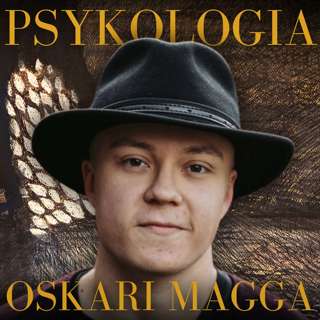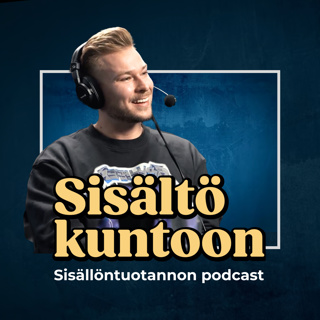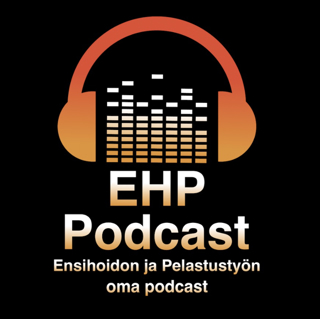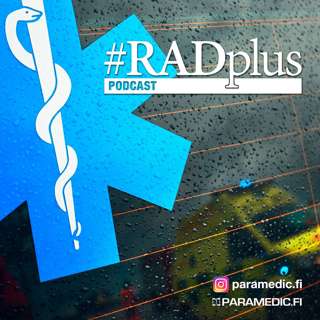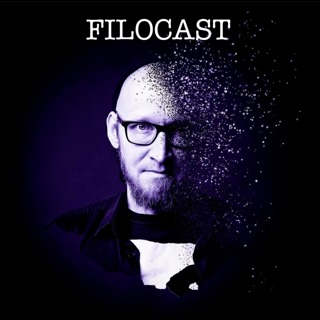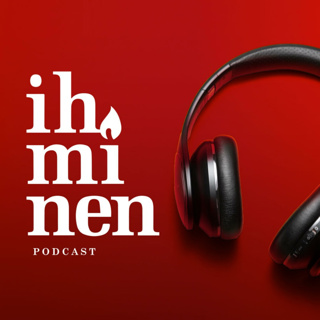
Ep. 306 Physician Side Gigs with Dr. Nisha Mehta
In this episode, Dr. Aaron Fritts interviews Dr. Nisha Mehta, a radiologist and founder of the Physician Side Gigs online community. --- CHECK OUT OUR SPONSORS Medtronic AV DCB https://www.medtronic.com/avdata Reflow Medical https://www.reflowmedical.com/ --- SHOW NOTES Dr. Mehta traces her journey from being a radiologist between jobs to managing and advocating for one of the largest grassroots physician communities, with more than 162,000 online members. She started Physician Side Gigs as a private Facebook group with a few doctors to get advice on managing finances for her paid writing and speaking engagements. Overtime, the size and scope of the group grew so much that there was a branch point where a separate group, Physician Community, formed. Both groups remain active today– while Physician Side Gig still centers around business and personal finance education, Physician Community is more free flowing and fosters a variety of conversations about the healthcare environment, clinical practice, and physician advocacy. This advocacy really came into the spotlight during the peak of COVID-19, when members of the online community collaborated to create a list of physician demands for the federal government and were successful in securing $70 billion for physicians in a stimulus package. Dr. Mehta cites the lack of bureaucracy in the group as factors that helped contribute to this outcome. The groups’ goals are to provide members with peer support and bridge them to opportunities to pursue other interests and revenue streams. We also discuss Dr. Mehta’s personal career trajectory and how her priorities shifted throughout the years. In the beginning stages of Physician Side Gigs, she was able to balance a full time clinical practice and manage the online group in her free time. However, as the group grew in audience and partnerships, she re-evaluated her priorities and saw that fostering the community gave her more energy and allowed her to make more impact than her clinical practice did. She now practices radiology on a per diem basis and devotes most of her time to Physician Side Gigs and physician advocacy. She has also hired staff members to help moderate the group and ensure that it remains a safe and supportive environment. Finally, Dr. Mehta speaks about physician autonomy. The decision to pursue a side gig is not always based on revenue maximization. Instead, side gigs can be a way for physicians to dedicate time to pursuing their non-clinical interests and prevent burnout. Her biggest advice for doctors is to be intentional about what they want their lives to look like, and to not get caught up in others’ expectations for them. In the long run, having career autonomy can extend career longevity and allow physicians to navigate their lives on their own terms. --- RESOURCES Physician Side Gigs Website: https://www.physiciansidegigs.com/ Ep. 194 (VI)- Financial Basics with the White Coat Investor: https://www.backtable.com/shows/vi/podcasts/194/financial-basics-from-the-white-coat-investor Ep. 277 (VI)- Private Equity and the Radiology Job Environment with Ben White: https://www.backtable.com/shows/vi/podcasts/277/private-equity-the-radiology-job-environment Ep. 27 (INN)- Physician Underdog with LOUD Capital Founder Navin Goyal: https://www.backtable.com/shows/innovation/podcasts/27/physician-underdog
31 Maalis 202351min

Ep. 305 Tools for Crossing Challenging CTO's with Dr. Jihad Mustapha
In this episode, host Dr. Sabeen Dhand interviews Dr. Jihad Mustapha, interventional cardiologist, about new technology for treating CLI, including CTOP classification, CTO crossing techniques, and reentry devices. --- CHECK OUT OUR SPONSOR Reflow Medical https://www.reflowmedical.com/ --- SHOW NOTES Dr. Jihad Mustapha is an interventional cardiologist who practices at Advanced Cardiovascular in Grand Rapids, MI. He used to perform the entire scope of interventional cardiology, until finding his passion in critical limb ischemia and dedicating his career to treating this complex disease. Advanced Cardiovascular has grown, and now includes a dedicated interventional cardiology department and a PAD/CLI specific department. The basic principle for treating chronic total occlusions is to approach them from the best direction. This generally starts with an up and over technique to do the initial planning angiography. Dr. Mustapha then uses the wire and catheter technique, but limits his efforts to 5 minutes. If he can’t cross, he tries a new method. If he can cross but can’t reenter distally, then there are multiple methods to turn to, including reentry devices like the Outback and Pioneer. He emphasizes that when using reentry devices, you must measure the CTO and enter just after it ends, allowing no more than 1-2 mm of space between the cap and your reentry point. If it is impossible to reenter at that level, you should not use a reentry device and should turn to another method. The Chronic Total Occlusion crossing approach based on Plaque cap morphology (CTOP) classification is helpful when deciding how to safely approach a CTO or which technique to turn to, and Dr. Mustapha uses it in all his cases. Next, we discuss pedal access. Dr. Mustapha acknowledges he hasn’t used reentry devices for years now, due to the fact that pedal access is so much quicker and works just as well. If a CTO has a complex CTOP classification, he doesn’t even try anterograde first, he just goes directly to pedal access and crosses retrograde. When he uses the retrograde approach to cross the CTO cap, he often finds the occlusion is not as long as he expects it to be, and also that he is intraluminal much more often than he initially anticipates. For long chronic total occlusions (CTOs), he starts with pedal access, crosses the CTO plaque cap, and continues through the occlusion, stopping just before the reentry point. If it pops through the cap, he then uses the tibiopedal artery minimally invasive retrograde revascularization (TAMI) technique, but if it does not, he comes anterograde and uses the flossing technique. Finally, we discuss how to use the Wingman device, as well as tips for using the Jenali and modified Schmidt techniques. Finally, we discuss new devices coming soon in the CLI arena. Dr. Mustapha is excited about companies that are creating a 2-in-1 device that allows you to cross the CTO and then use it as a reentry device. Dr. Mustapha parts by telling listeners that CTOs are never friendly, whether long, short, calcified, or non-calcified, but as long as you anticipate this and go into a case expecting surprises, you’ll do well. --- RESOURCES Ep. 60: Building a Limb Salvage Program https://www.backtable.com/shows/vi/podcasts/60/building-a-limb-salvage-program CTOP Paper: https://capbuster.com/wp-content/uploads/2021/03/Chronic-Total-Occlusion-Crossing-Approach-Based-on-Plaque-Cap-Morphology-The-CTOP-Classification.pdf Tibial Pedal Access Paper: https://www.openaccessjournals.com/articles/tibialpedal-arterial-access--retrograde-interventions-for-advanced-peripheral-arterial-disease--critical-limb-ischemia.html Jenali Scoring System: https://evtoday.com/pdfs/et0910_Feature_mustapha.pdf Find this episode on backtable.com to view the full list of resources mentioned in this episode.
27 Maalis 202345min

Ep. 304 Código TEP: ¿Lo Hacemos Posible? con Sara Lojo y Juan Jose Ciampi Dopazo
En este episodio de BackTable VI, Dr. Pilar Bayona Molano, Dr. Juan Ciampi, y Dr. Sara Lojo Lendoiro discuten el manejo de embolia pulmonar para pacientes con niveles de riesgos diferentes. --- EARN CME Reflect on how this Podcast applies to your day-to-day and earn free AMA PRA Category 1 CMEs: https://earnc.me/CxjlQ7 --- SHOW NOTES Primero, Dr. Ciampi explica que un equipo multidisciplinario es más importante en el manejo del paciente con una embolia pulmonar. Si el paciente tiene un riesgo bajo o intermedio, el médico hará una primera valoración y puede darle la anticoagulación. Para pacientes con riesgo alto, el equipo necesita ser preparado para activar los códigos y empezar la intervención endovascular. Entonces, Dra. Lendoiro nota la importancia de evaluar los marcadores de laboratorio y considerar las comorbilidades y calidad de vida de cada paciente. Dr. Ciampi añade que hay un riesgo alto de desarrollar hipotensión. Por eso, el paciente podría necesitar vasopresores y también una ecografía para evaluar la función del ventrículo derecho. Entonces, los doctores discuten las técnicas de la trombectomía endovascular. Dr. Ciampi explica que usa la vía femoral ante todo, pero los radiólogos intervencionistas deben usar la técnica con que tenían la mayor experiencia. Enfatiza la importancia de remover la mayor cantidad de trombo posible. Adicionalmente, Dra. Lendoiro explica la necesidad del monitoreo continuo del paciente debido al hecho de que el estatus del paciente puede cambiar de momento a momento. Hay muchas complicaciones posibles durante el procedimiento, como la presencia de materia oclusiva y perforación vascular, que pueden tener consecuencias fatales. También discuten los materiales que usan durante las trombectomias, incluso el uso de la máquina de ultrasonido. Finalmente, los doctores discuten cómo pueden educar al público y a las especialidades médicas sobre las embolias pulmonares. Dr. Ciampi recomienda a los estudiantes interesados en esta condición leer las pautas médicas y observar intervencionistas. Dra. Lendoiro las anima desarrollar buenas relaciones con colegas de especialidades diferentes para practicar trabajar en un grupo multidisciplinario.
24 Maalis 202333min

Ep. 303 Why Do I Need a Physician Coach? with Dr. Elsie Koh
In this episode, host Dr. Aaron Fritts interviews Dr. Elsie Koh about physician coaching and leadership training, including the difference between mentorship and coaching, how to break through common barriers, and how to empower yourself to realize your potential. --- CHECK OUT OUR SPONSORS Medtronic AV DCB https://www.medtronic.com/avdata Reflow Medical https://www.reflowmedical.com/ --- SHOW NOTES Dr. Elsie Koh is an interventional radiologist and founder of Lead Physician, a physician specific coaching company. She trained in coaching at the Proctor Gallagher Institute (PGI), the International Coaching Federation (ICF), and received an Executive Master in Healthcare Leadership at Brown University. After working for only two years out of fellowship, she became the medical director of a surgery center. She had no experience in leadership, and due to her own insecurity and modeling after what she had seen in her medical training, she failed at this position. She was given feedback at a work event, which changed the trajectory of her career. After this occurred, she began reading self-help and personal development books. She sought out the PGI institute, and ended up training in their program to become a coach. Through this difficult experience, she realized other physicians could benefit from this type of guidance. Next, Dr. Koh explains the difference between mentorship and coaching. Mentorship is having someone tell you what to do, or modeling a behavior or career path that you want to emulate. Coaching allows a person to discover more of themselves, become aware of their blind spots, and learn what makes them unique. We discuss some of the most common barriers she sees among physicians that prevent them from seeking out coaching. She believes many hesitate because they don’t believe it will work for them. Many physicians simply don’t know what coaching involves and what their goals should be. Sometimes cost is prohibitive, mostly due to the fact that people are not used to investing in themselves in this way. Many physicians lack the confidence to admit they don’t know how to do something, such as start a company or be a successful leader. At Lead Physician, they have the advantage of only coaching physicians, which helps clients let their guard down, because they are around like-minded thinkers. Dr. Koh likes group coaching sessions because it allows people to build off each other's inspiration, and yields greater idea sharing than one-on-one sessions. --- RESOURCES Ep. 194: Financial Basics from the White Coat Investor https://www.backtable.com/shows/vi/podcasts/194/financial-basics-from-the-white-coat-investor BackTable Innovation Ep 27: Physician Underdog https://www.backtable.com/shows/innovation/podcasts/27/physician-underdog Contact Dr. Elsie Koh: info@drelsiekoh.com Lead Physician: https://www.leadphysician.org Elsie Koh TED Talk: https://www.youtube.com/watch?v=hX19-7VRRfI
20 Maalis 202335min

Ep. 302 Treating Cerebral Aneurysms with Dr. Aaron Bress
In this episode, neurointerventional radiologists Dr. Sabeen Dhand and Aaron Bress discuss treatment decisions and devices used in the endovascular treatment of cerebral aneurysms. --- CHECK OUT OUR SPONSORS MicroVention FRED X https://www.microvention.com/emea/product/fred-x RapidAI http://rapidai.com/?utm_campaign=Evergreen&utm_source=Online&utm_medium=podcast&utm_term=Backtable&utm_content=Sponsor --- SHOW NOTES Dr. Bress starts by describing the patient selection process for treatment of ruptured and unruptured aneurysms, which involves collaboration with critical care and neurosurgery teams. CTA is needed for evaluation of the quality and location of the aneurysm. He notes that it is important to check for parenchymal hemorrhage and mass effects since this warrants further consultation with neurosurgery. Generally, his practice will treat an unruptured aneurysm if it is 4mm or larger. The decision to treat also depends on the patient’s preferences and their personal evaluations of the risks regarding non-treatment as well as risks of intervention. The major complications of interventions on unruptured aneurysms include rupture and stroke, which can range in severity. Other complications include aneurysm enlargement due to compaction of coils into the sac and introduction of thrombus into the parent vessel. To prevent this, Dr. Bress administers intraprocedural heparin and and prescribes antiplatelet agents. Dr. Bress emphasizes that complications are inevitable and it is important for IRs to develop this mindset while also taking ownership of outcomes and building rapport with patients. Next, we discuss new endovascular technology and techniques used in the treatment of aneurysms. These include the use of flow diverters, stent or balloon-assisted coiling, and Woven EndoBridge (WEB). Each tool can be used based on different indications, and it is this creative problem solving that keeps Dr. Dhand and Dr. Bress engaged in the field. Finally, the doctors present different pathways that trainees can use to enter the endovascular neurointerventional space. They can start from neurosurgery, neuroradiology, and neurology and go on to pursue further training. --- RESOURCES Rapid AI: https://www.rapidai.com/stroke Viz.ai: https://www.viz.ai/
17 Maalis 202336min

Ep. 301 New Technologies for Treatment of Cerebral Aneurysms with Dr. David Altschul and Dr. Omar Tanweer
In this episode, host Dr. Sabeen Dhand speaks with neurosurgeons Drs. David Altschul and Omar Tanweer about updates on cerebral aneurysms, including device innovation, risk stratification, and the importance of the doctor-patient relationship in decision-making. --- CHECK OUT OUR SPONSOR MicroVention FRED X https://www.microvention.com/emea/product/fred-x --- SHOW NOTES Dr. Omar Tanweer is the director of cerebrovascular and endovascular neurosurgery at Baylor College of Medicine. He works in a multidisciplinary group of neurologists, radiologists, and neurosurgeons. He trained at NYU and has been at Baylor for 2 years, where he does 100% neurovascular work. Dr. David Altschul is also from New York and is the division chief of neurovascular surgery at Montefiore. He completed an endovascular fellowship in Manhattan and has now been back at Monteriore since 2014. Both physicians have an 80 to 20 endovascular to open case ratio. In the case of ruptured cerebral aneurysms, Dr. Altschul describes a rule of threes. Around one third of patients pass away before reaching a hospital, another third arrive with significant neurologic deficits, the final third simply endure a headache. The severity of symptoms on presentation is generally predictive of outcome. They use the Hunt and Hess score, as well as the Modified Fisher Scale in their workup. They will generally only put in a ventriculostomy if a patient is lethargic and has a Hunt and Hess grade of at least 3. Both physicians use viz.ai to review their aneurysm cases at their home institutions, as well as at all local referring hospitals, as they are all connected via the viz platform. For unruptured aneurysms, they implement the PHASES score and rely on patient preference. Some patients are comfortable monitoring the growth of very small aneurysms, while others prefer the risk of treating it over the risk of monitoring due to the fear of having a known aneurysm. The two agree that developing a good doctor-patient relationship is important in these cases, because getting to know your patient can help you decide which of these small aneurysms to treat. Finally, we discuss new technology in the treatment of cerebral aneurysms. Coils have improved by becoming smaller, containing biologic agents, and coming in different shapes. Dr. Tanweer discusses the difference between balloon and stent assisted techniques. Balloon assisted is great for wide neck aneurysms or patients who can’t be on dual anti-platelet therapy (DAPT) and are better in the case of re-rupture. Stent assisted, when tolerated, increases efficacy and reduces recurrence by keeping coils in place, as well as providing a scaffold for endothelial cells to heal across. The Flow Diverter, a vessel preservation device, is less porous and good for internal carotid and anterior circulation aneurysms. The downside is that it requires DAPT. There is also the Web device, an intrasaccular device that diverts flow across the metal in the aneurysm and at the base of the neck, but does not leave any metal in the normal part of the artery. These are mainly used for wide neck bifurcation aneurysms at the internal carotid, basilar, anterior communicating, and middle cerebral artery bifurcations. --- RESOURCES Twitter: @DavidAltschulMD @omar_tanweer Viz.aneurysm: https://www.viz.ai/aneurysm
13 Maalis 202339min

Ep. 300 Which Medical Device, a Tool to Help you Choose with Dr. Philip Haslam
In this episode, co-hosts Dr. Aaron Fritts and Dr. Diana Velazquez-Pimentel interview Dr. Phil Haslam, founder of Which Medical Device and current president of BSIR, about the process of creating a resource bank of medical devices that spans multiple specialties. --- CHECK OUT OUR SPONSOR RADPAD® Radiation Protection https://www.radpad.com/ --- EARN CME Reflect on how this Podcast applies to your day-to-day and earn free AMA PRA Category 1 CMEs: https://earnc.me/SfFu13 --- SHOW NOTES Dr. Haslam began his career as a clinician in medicine, but always knew he wanted to do radiology, specifically interventional radiology. In the UK, you have to train in either medicine or surgery before subspecialty training. He had been an IR consultant for around 8 years when he suddenly couldn’t find the right t-fasteners for a gastrostomy tube placement. He searched the internet for alternatives, but realized it was very cumbersome to complete such a search. Around this same time, he was getting into photography and frequented the website DP Review, which was a way to browse different lenses and parts for cameras, with ratings and information about the pieces. Inspired by this website, he thought a similar website for IR devices would be helpful to clinicians who practice in different environments and are required to know different devices. He began by finding a local web developer and used his own money to pay for the initial website development. He then began loading products he had used, specifically devices he liked or didn’t like. He started telling colleagues about the website, and the word spread fast. What he found difficult was not traction to the website, but getting members to contribute to content, such as writing device ratings or uploading instructional videos. After a couple years, he decided to branch outside of IR into other device heavy specialties like cardiothoracics and orthopedics. He asked colleagues from other specialties to contribute as editors. Dr. Haslam believes the high traction in the IR device section is due to his frequent attendance of conferences, as well as his relationships with industry. Finally, we discuss future goals for Which Medical Device. Dr. Haslam hopes to upload more instructional videos to the website and the YouTube page. Additionally, he plans to bolster his editorial board to include even more specialties. He encourages people to engage by suggesting new devices for the website; they can do so via the home page of the website. He will add more in-depth reviews and device comparisons, as well as launch a device of the month column. --- RESOURCES Website: https://www.whichmedicaldevice.com YouTube Channel: https://www.youtube.com/channel/UCYnn3mCZGfgbUJmmehopcnw Email: phil@whichmedicaldevice.com British Society of Interventional Radiology: https://www.bsir.org
10 Maalis 202340min

Ep. 299 Robotics in Interventional Oncology with Lucien Blondel
In this episode, host Aaron Fritts interviews engineer Lucien Blondel, co-founder and CTO of Quantum Surgical. We discuss robotic applications for interventional oncology procedures and the Epione robot’s impacts on workflow and accuracy. --- CHECK OUT OUR SPONSOR RADPAD® Radiation Protection https://www.radpad.com/ --- SHOW NOTES Lucien first started innovating with robotics in the orthopedics, then neurosurgery fields. He has worked in startups and large corporations. Now, he is focused on interventional oncology. The catalyst for his idea came when his former startup was acquired. Lucien chose to create a company with three other co-founders and then explore. Quantum Surgical’s mission is to democratize minimally invasive cancer treatment through pre-planning, advanced robotic assistance, and tumor ablation confirmation. Lucien started by obtaining the broad vision of the market. He noticed a clear unmet need: There was a proven clinical technique, but outcomes were very operator-dependent. Quantum Surgical’s Epione robot could help alleviate this gap. Higher accuracy can lead to decreased invasiveness and more patient comfort in the outpatient setting. The first application for Quantum Surgical was pre planning software for interventional oncology procedures. He noticed that operators had difficulty visualizing masses for ablation. The robotic image vision software allows merging of CT and MRI images. Additionally, it can provide 3D modeling of ablation zones, map out needle trajectories, and confirm ablation by comparing pre-procedure and post-procedure imaging. Lucien emphasizes that the Epione robot can provide multiple functionalities for the same procedure, reducing the need to utilize different devices. The built-in features are programmed to adjust to patient movements and allow the physician to choose the safest path for needle placement. Finally, we discuss implications of robotics for workflow. Doctors can be more efficient in reviewing images, placing needles, and confirming ablation zones. Epione also reduces the need to obtain images during the procedure. At the moment, Epione is primarily focused on ablation of liver and kidney tumors. However, Lucien envisions the technology expanding to tumor biopsies, especially those that are located in high risk areas. Quantum Surgical is also looking into machine learning and prediction of local tumor progression. --- RESOURCES Quantum Surgical: https://www.quantumsurgical.com/epione/ Less Invasive Podcast: https://podcasts.apple.com/us/podcast/less-invasive/id1604673690 ROSA One Robot: https://www.zimmerbiomet.com/en/products-and-solutions/zb-edge/robotics/rosa-brain.html
8 Maalis 202345min








